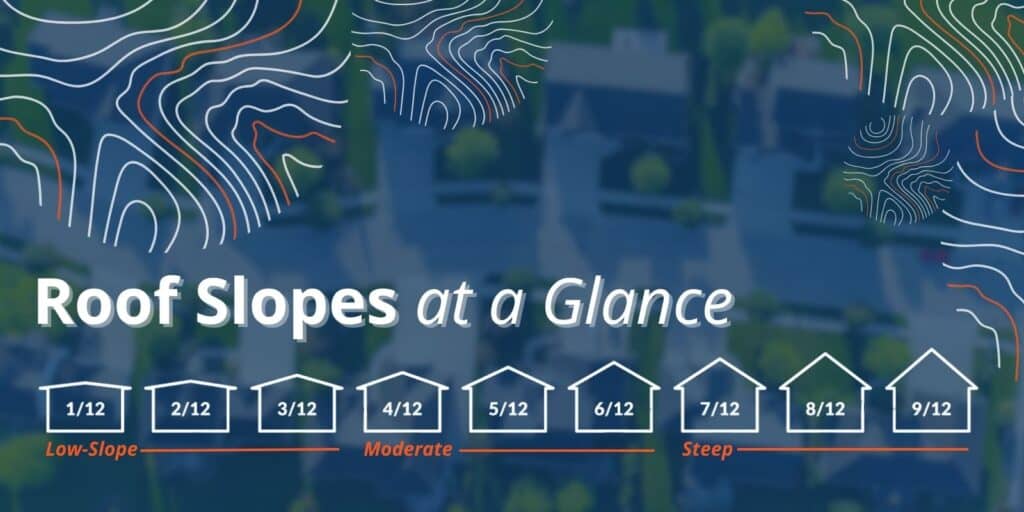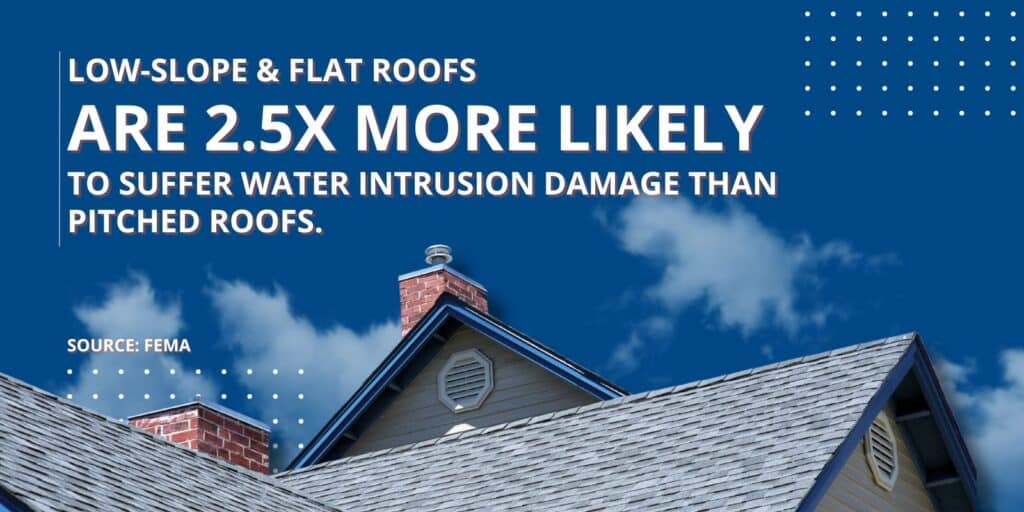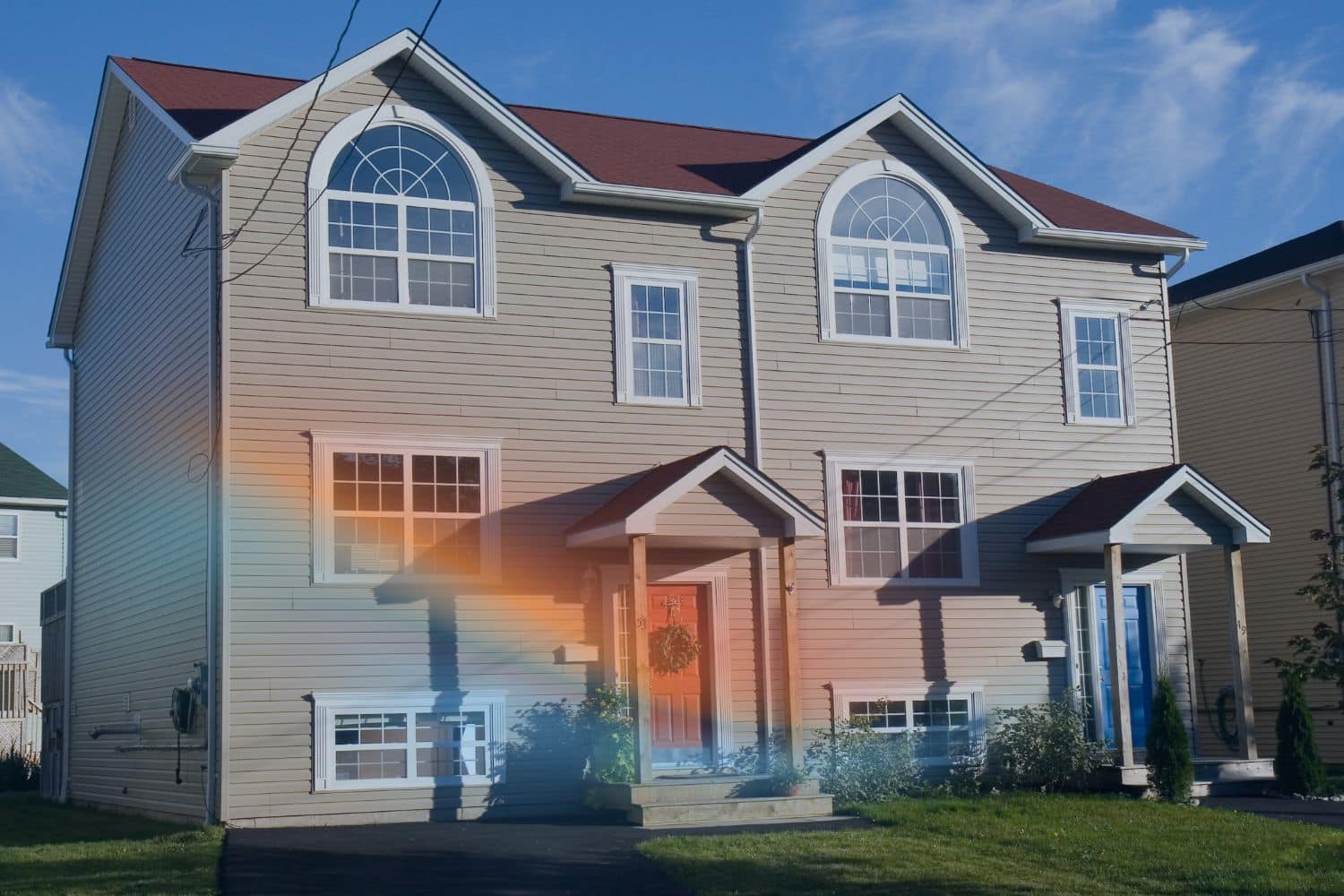If you’re planning roof repairs, replacements, or adding features like solar panels or gutters, knowing your roof slope is essential, and you’re going to need a calculator. The slope (also called pitch) affects everything from drainage to shingle choice to whether a roof meets local code requirements.
The good news? You don’t need to climb a ladder with a tape measure or protractor. We’ve included a simple roof slope calculator below that helps you find your roof pitch in seconds.
Before you use it, here’s a quick look at why roof slope matters and what your results actually mean.
Table of Contents
ToggleJump to the Calculator?
What Is Roof Slope?

Roof slope describes how steep your roof is. It’s usually measured as a ratio that compares the vertical rise to the horizontal run. For example, a 6:12 slope rises 6 inches for every 12 inches of horizontal distance.
You might also hear roof pitch described in degrees, but most residential roofers and inspectors use the rise-over-run ratio. This number helps determine:
- What roofing materials can be used
- Whether drainage is adequate
- How much weight can the structure support
- If a roof complies with local or manufacturer standards
In Central Texas, where we deal with high heat, heavy rain, and wind-driven storms, slope plays a big role in how well a roof performs over time.
Try the Roof Slope Calculator
Use the tool below to calculate your roof’s slope using simple measurements. All you need is the rise (height) and run (horizontal length) of your roof section.
Once you input your measurements, the calculator will display your roof slope in ratio form and degrees. Use this info when planning repairs, getting estimates, or checking your home’s specs for insurance or upgrades.
Roof Slope Calculator
Enter the rise and run of your roof below to calculate pitch, slope, and angle.
Why Roof Slope Matters
If your slope is too shallow, your roof may not drain properly during rainstorms. This can lead to water pooling, leaks, and faster wear on shingles. On the other hand, a very steep roof may require different materials and added ventilation.
Here are a few reasons you may want to know your roof’s slope:
1. Roofing Material Compatibility
Some materials work better on steep slopes, while others are designed for low-pitch roofs. For example:
- Asphalt shingles typically require a slope of 2:12 or higher
- Metal panels can work on low-slope and steep-slope roofs
- Clay tiles and slate are best on roofs with at least a 4:12 pitch
2. Code Compliance
Local building codes in Texas require minimum slopes for certain materials to prevent standing water and structural issues. Knowing your slope can help ensure your contractor uses materials that meet code and manufacturer guidelines.
3. Insurance or Roof Certification
Home insurance providers may require roof specs when writing or renewing a policy. Some roof certifications include slope in their assessment, especially if wind or water damage is a concern.
4. Energy Efficiency and Solar Planning
If you’re thinking about installing solar panels, the roof angle affects how much sunlight they receive. A slope between 15 and 40 degrees is ideal in most Central Texas neighborhoods, depending on orientation.

Related Questions and Answers
How do I find the rise and run for the calculator?
You can measure from inside your attic or from the end of the rafters outside your home. Use a level and tape measure for best results. If you’re not comfortable climbing or measuring, you can also estimate pitch based on roof height and home width.
Is a steeper roof always better?
Not always. Steep roofs shed water and debris more easily, but they’re also more expensive to install and maintain. Low-slope roofs are more affordable but require careful material selection and drainage planning.
Can I trust an online calculator for real roof work?
A calculator gives you a useful estimate, but a qualified inspector or contractor should always confirm the roof slope before major projects. Use the tool as a guide, not a final measurement for structural decisions.
What’s the typical roof slope in Central Texas?
Most Central Texas homes fall between 4:12 and 8:12, depending on the design. Newer subdivisions may favor higher slopes for curb appeal and drainage, while older ranch-style homes often have flatter pitches.
When to Call a Professional
If you’re planning repairs, replacing shingles, or buying a home and want a clear picture of your roof’s condition, it’s time to bring in a professional.
Centex Inspection Services provides detailed roof evaluations as part of our home inspection services throughout Central Texas. We measure slope, check for wear, examine flashing, and identify potential drainage or structural concerns.
Whether you’re planning ahead or trying to avoid surprises during a home sale, knowing your roof’s slope is just one part of understanding your home’s condition.
Conclusion
Roof slope affects more than just appearance. It plays a major role in how your roof drains, which materials are safe to use, and how long your roofing system will last. Whether you’re installing new gutters, adding solar, or preparing for repairs, it’s helpful to know your numbers first.
Use our free roof slope calculator above, and if you need an expert’s opinion, schedule a home inspection with Centex Inspection Services. We’ll help you get the full picture, from ridge to runoff.




